Key takeaways
- Utilize the rule of thirds for effective portrait composition, placing the subject’s eyes along the top third line for a more engaging image.
- Take advantage of the Sony A7 III’s Eye AF technology and low-light performance to capture sharp, emotion-filled portraits in varying conditions.
- Select lenses between 85mm and 105mm to flatter subjects naturally, and consider 50mm for a wider perspective that includes the surrounding environment.
- Experiment with lighting, angles, and composition to convey mood and emotion, allowing for dynamic and authentic storytelling in each portrait.
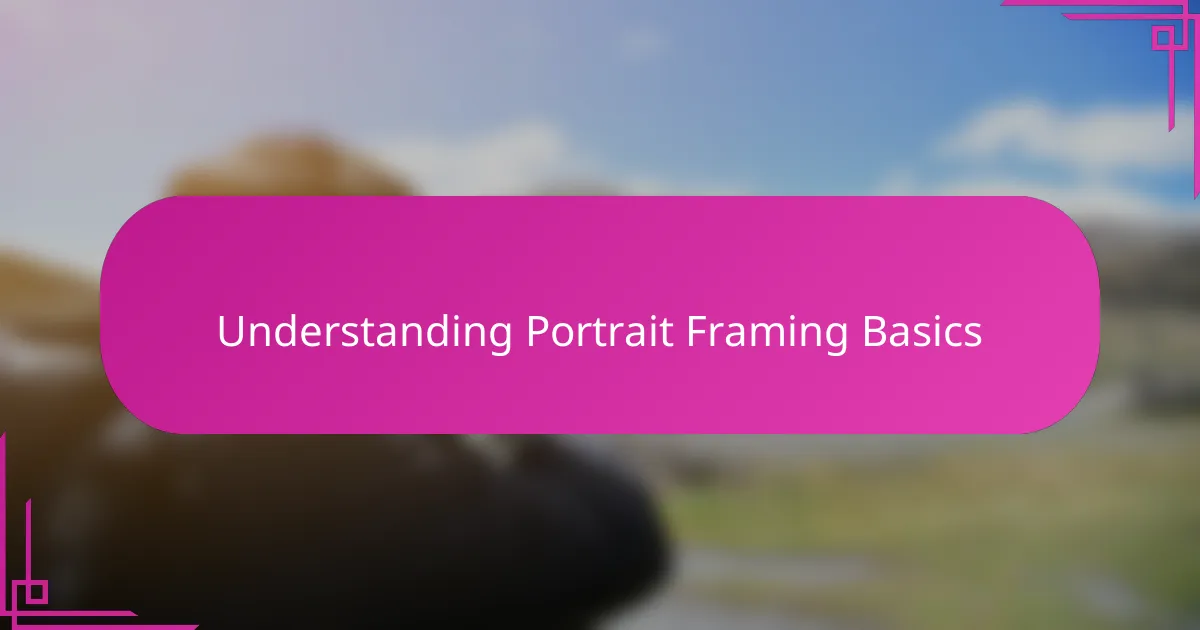
Understanding Portrait Framing Basics
When I first started framing portraits with my Sony A7 III, I quickly realized that understanding the basics is essential. It’s not just about placing the subject in the center; it’s about deciding how much of the person’s face or body to include. I often ask myself: what story do I want this frame to tell?
One key concept I keep coming back to is the rule of thirds. By imagining a grid on the frame, I place the subject’s eyes along the top third line to create a more natural, engaging image. I’ve found that this little shift in framing instantly adds life to a portrait.
Another thing I’ve learned is the importance of space—sometimes leaving room around the subject conveys emotion better than a tight close-up. Have you ever noticed how a slight gap can suggest anticipation, freedom, or even vulnerability? That’s the subtle power behind good framing.

Key Features of Sony A7 III for Portraits
One feature that truly changed how I capture portraits with my Sony A7 III is its Eye AF technology. At first, I was skeptical about relying on autofocus for something as delicate as eyes, but this feature locks onto my subject’s eyes with impressive precision. It’s like having a trusted assistant who never lets the focus slip, even when my subject is shifting or the lighting is tricky.
Another aspect I can’t ignore is the camera’s impressive low-light performance. When I shoot portraits indoors or at dusk, the A7 III’s high ISO capabilities allow me to keep my images clean and sharp without cranking up the shutter speed too high. This freedom to work in natural, softer light really helps me capture my subject’s true mood without forcing them to pose under harsh lighting.
I also appreciate how the full-frame sensor creates that beautiful depth of field everyone talks about. It’s satisfying to have my subject stand out against a smoothly blurred background, making the portrait feel more intimate and focused. Have you ever noticed how that subtle separation can transform a simple shot into something that feels like it tells a deeper story? For me, it’s one of the defining features of this camera when shooting portraits.
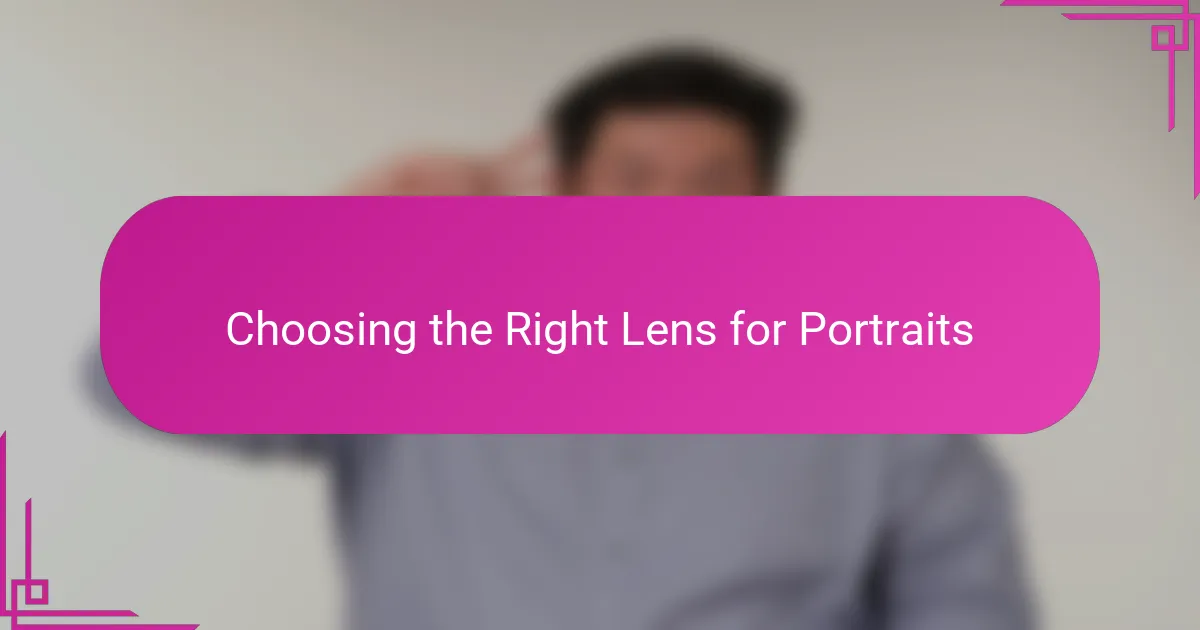
Choosing the Right Lens for Portraits
Choosing the right lens is something I pay a lot of attention to when shooting portraits with my Sony A7 III. I’ve found that lenses with a focal length between 85mm and 105mm really flatter the subject, compressing features in a natural way without distortion. Have you ever noticed how wider lenses tend to exaggerate [censured] features in an unflattering way? That’s why I usually avoid anything below 50mm for close portraits.
Sometimes, I switch to a 50mm lens when I want to bring more of the environment into the frame. It’s not just about the subject’s face but the story around them, right? This lens gives a slightly wider perspective and still offers beautiful background blur, helping me balance intimacy with context.
What I appreciate most is how prime lenses compel me to get closer and engage more with my subject. This proximity often draws out genuine expressions that a zoom lens might not capture as authentically. For me, choosing the right lens isn’t just technical—it’s about building a connection through the frame.
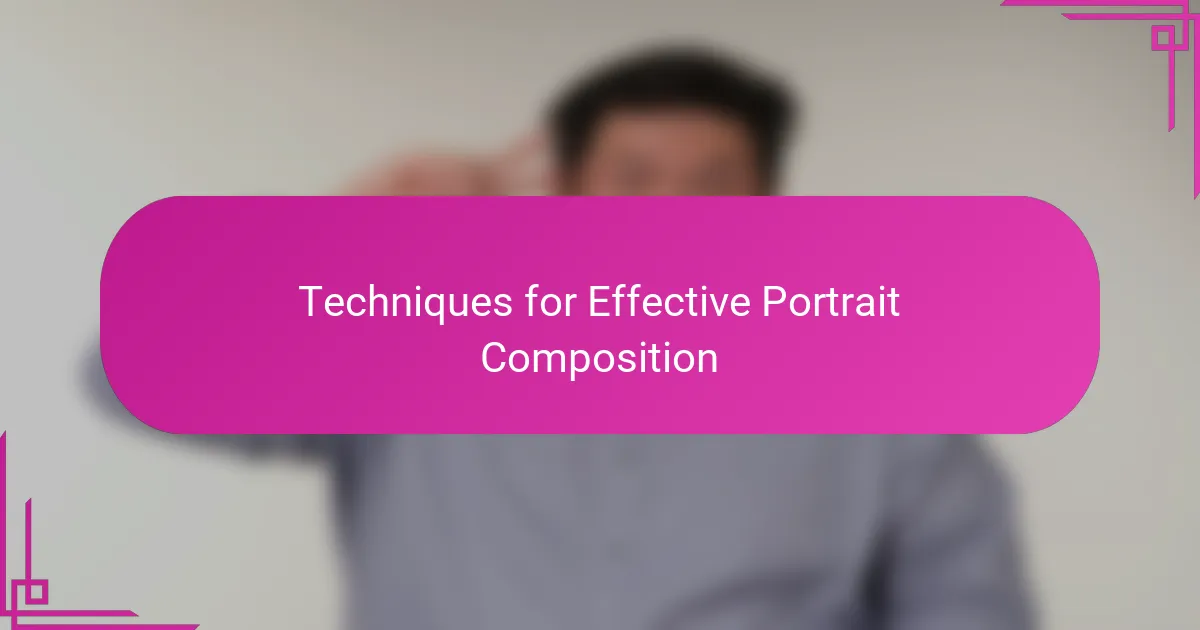
Techniques for Effective Portrait Composition
When composing a portrait, I always remind myself that angles matter just as much as positioning. Tilting the camera slightly or changing my shooting height can completely alter how a subject’s personality comes through. Have you ever noticed how a low angle adds confidence, while a gentle overhead shot softens expressions? Playing with perspective has become one of my favorite tools for storytelling.
Lighting plays a huge role in how I frame portraits. I like to experiment with natural window light or even handheld reflectors to sculpt shadows and highlights on my subject’s face. It’s those subtle contrasts that bring depth and drama, making the image feel alive rather than flat. How light interacts with contours often guides where I place the frame’s edges.
Composition isn’t just about rules; it’s about emotion. Sometimes I deliberately break symmetry or let a subject’s gaze wander out of frame to create tension or mystery. These choices let me convey mood beyond what a straightforward pose can deliver. Isn’t it amazing how a slight compositional twist can transform a simple portrait into a compelling story?
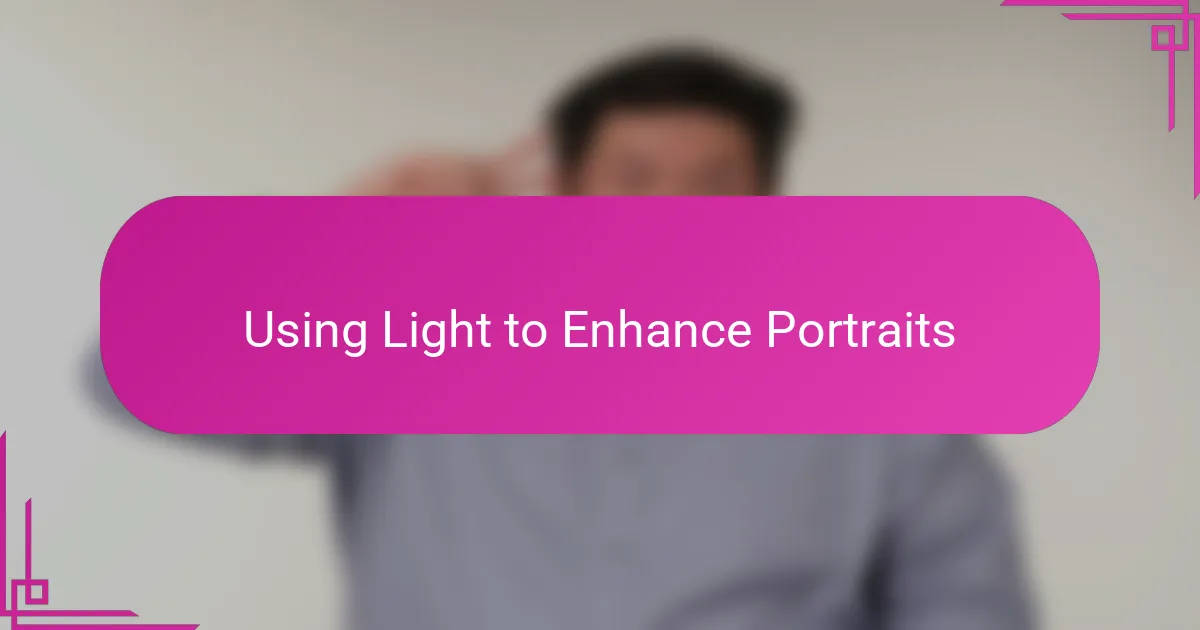
Using Light to Enhance Portraits
Light is my most trusted companion when framing portraits. I often chase the golden hour, that magical time just after sunrise or before sunset, because the warm, soft light wraps around my subject like a gentle embrace. Have you noticed how harsh midday light can wash out features? That’s why I prefer the subtle play of shadows and highlights during those quieter moments.
I sometimes use natural window light indoors, positioning my subject just so to catch the perfect angle. It’s fascinating how a slight shift in light direction can change the entire mood—from intimate and vulnerable to strong and confident. I remember shooting one portrait where the light fell softly across the eyes, making them sparkle with emotion—it felt like the photo reached deeper than the surface.
Reflectors are another trick up my sleeve when natural light isn’t enough. Bouncing light back onto a shadowed cheek or under the chin softens harsh contrasts and brings balance. Isn’t it amazing how just a bit of light can transform a flat image into something three-dimensional and alive? For me, light isn’t just illumination—it’s a storytelling tool that shapes every portrait I capture.
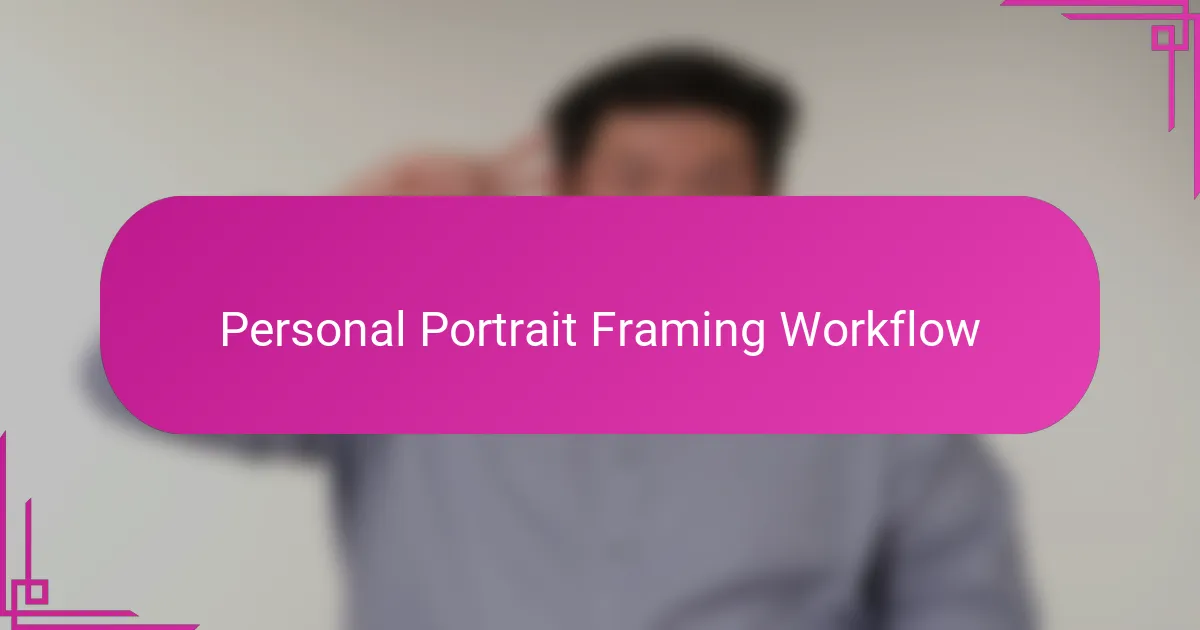
Personal Portrait Framing Workflow
When I start framing a portrait with my Sony A7 III, my workflow always begins with scanning the scene through the viewfinder, looking for the best place to position my subject. It’s almost like having a conversation with the frame itself—what should be included, and what can I leave out? I find this initial mental framing sets the mood before I even press the shutter.
Sometimes, I tweak my composition in real time as the subject moves or interacts with their environment. This dynamic process keeps me engaged and allows the portrait to evolve naturally. Have you ever noticed how a spontaneous moment caught mid-frame often tells a more authentic story than a perfectly posed shot?
Posture and headspace are two framing elements I consciously monitor throughout the shoot. Giving the subject enough breathing room above the head or allowing space in the direction they’re looking creates a balanced feel that draws viewers in. It’s these subtle adjustments, done intuitively over time, that make each portrait feel intentionally crafted yet effortlessly alive.
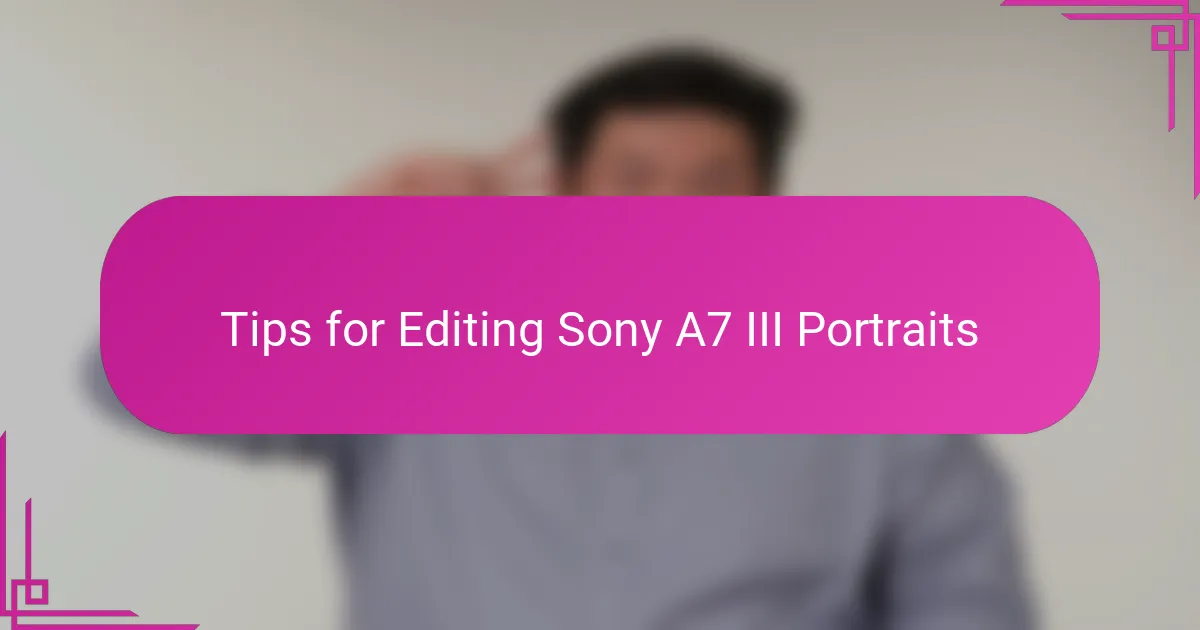
Tips for Editing Sony A7 III Portraits
Editing portraits from my Sony A7 III always feels like the second act of the story. I tend to start by enhancing skin tones because, to me, natural-looking skin is the foundation of a great portrait. Have you ever noticed how a slight warmth or gentle smoothing can transform a photo from just okay to truly captivating? It’s like giving your subject a subtle, flattering glow without losing their character.
When I dive deeper into editing, I pay close attention to the eyes. That sharpness and sparkle can make or break the emotional connection in a portrait. I often zoom in and fine-tune clarity and contrast around the eyes to bring out that vivid intensity. It’s amazing how these small tweaks help a viewer feel like they’re looking right into the soul of the subject.
One technique I swear by is selectively adjusting the background blur during editing. Even with the Sony’s stunning bokeh, sometimes the background can distract rather than complement. I use gentle masking tools to enhance the separation, giving the subject room to breathe and truly pop from the frame. Have you tried this? It’s a subtle move but, in my experience, it truly sharpens the overall storytelling impact.